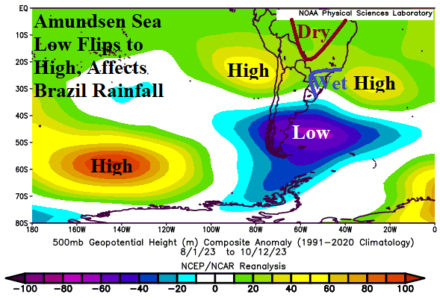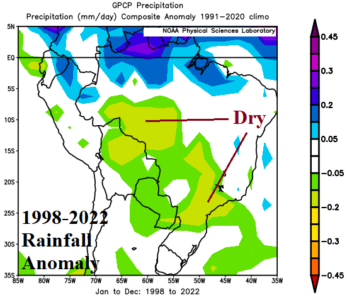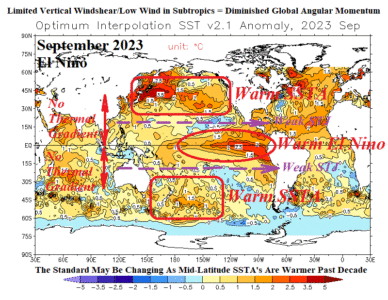10/16/2023, 8:52 am EDT
During AUG/SEP/OCT 2023, the Amundsen Sea low has disappeared and been replaced by an upper ridge. The presence of the Amundsen Sea low (since 2016) and isolated disruption (2019 and 2023) seems to be independent of ENSO phase. The effect of this regime on Brazil rainfall for AUG/SEP/OCT is generally wetter than normal. However, during the past 3 months, Central Brazil is notably dry while rainfall has consolidated mostly in East/Southeast Brazil.
![Climate-Impact-Company-logo-sm[1]](https://climateimpactcompany.com/wp-content/uploads/2023/08/Climate-Impact-Company-logo-sm1.png)



